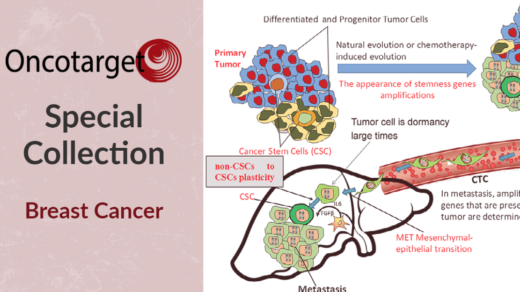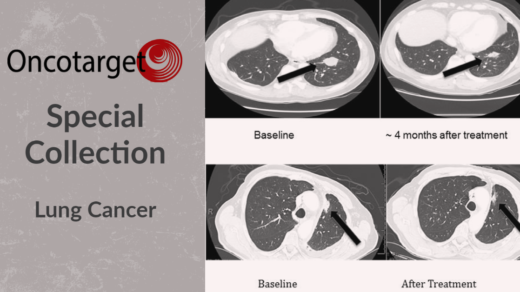In this new study, researchers investigated the interplay between the SARS-CoV-2 spike protein and tumor suppressor gene p53.
—
The profound impact of the COVID-19 pandemic, caused by the SARS-CoV-2 virus, has been felt across various domains, including the realm of cancer research and treatment. As scientists delve deeper into the intricate mechanisms of this viral pathogen, intriguing revelations have emerged regarding its potential influence on cellular processes pivotal to cancer development and progression.
In a new study, researchers Wafik S. El-Deiry and Shengliang Zhang from Brown University and Lifespan Health System shed light on the intricate interplay between the SARS-CoV-2 spike protein and the tumor suppressor p53, a key guardian of genomic integrity. On May 3, 2024, they published their new research paper in Oncotarget’s Volume 15, entitled, “Transfected SARS-CoV-2 spike DNA for mammalian cell expression inhibits p53 activation of p21(WAF1), TRAIL Death Receptor DR5 and MDM2 proteins in cancer cells and increases cancer cell viability after chemotherapy exposure.”
The Study
In this study, researchers El-Deiry and Zhang uncovered a hitherto unknown facet of the SARS-CoV-2 spike protein’s impact on cancer cells. Their findings, meticulously detailed in their research paper, have ignited a newfound curiosity within the scientific community.
To appreciate the significance of this discovery, one must first comprehend the critical function of the p53 protein, often referred to as the “guardian of the genome.” This multifaceted tumor suppressor plays a pivotal role in safeguarding cellular integrity by regulating various processes, including cell cycle arrest, DNA repair, and apoptosis (programmed cell death). When cells encounter stress or DNA damage, p53 is activated, triggering a cascade of events aimed at preserving genomic stability or eliminating compromised cells.
The study has unveiled a remarkable phenomenon: the SARS-CoV-2 spike protein appears to disrupt the intricate balance of the p53 pathway, potentially compromising its tumor-suppressive capabilities. Through a series of meticulously designed experiments, the researchers demonstrated that the presence of the SARS-CoV-2 spike protein in cancer cells interferes with the binding of p53 to its negative regulator, MDM2.
This disruption, in turn, impedes the activation of key downstream targets of p53, including the cell cycle regulator p21(WAF1), the apoptosis-inducing TRAIL Death Receptor DR5, and even MDM2 itself. Consequently, cancer cells expressing the SARS-CoV-2 spike protein exhibited a diminished response to chemotherapeutic agents, manifested by a reduced induction of these critical p53 targets and an increased cell viability following treatment.
Implications for Cancer Therapy
The ramifications of this discovery are far-reaching, particularly in the context of cancer treatment. Chemotherapy remains a cornerstone of cancer management, and its efficacy is heavily reliant on the proper functioning of cellular mechanisms that detect and respond to DNA damage. The p53 pathway plays a pivotal role in this intricate process, acting as a sentinel that triggers cell cycle arrest or apoptosis in response to genotoxic insults.
However, the findings of this study suggest that the presence of the SARS-CoV-2 spike protein may compromise these critical defense mechanisms, potentially rendering cancer cells more resistant to chemotherapeutic agents. This revelation raises concerns about the potential impact of SARS-CoV-2 infection or the administration of spike protein-based vaccines on the efficacy of cancer treatments, particularly in individuals undergoing chemotherapy.
Mechanistic Underpinnings
While the study has shed light on the disruption of the p53 pathway by the SARS-CoV-2 spike protein, the precise mechanisms underlying this phenomenon remain to be fully elucidated. Several intriguing questions arise:
- What are the structural determinants that govern the interaction between the SARS-CoV-2 spike protein and components of the p53 pathway?
- Could post-translational modifications of the spike protein or p53 itself influence their functional interplay?
- How do different cellular contexts, such as varying expression levels of p53 regulators or the presence of specific mutations, modulate the observed effects?
- Can this newfound knowledge be leveraged to develop strategies that mitigate the potential impact of SARS-CoV-2 on cancer treatment outcomes?
Addressing these questions will require a concerted effort from the scientific community, involving multidisciplinary collaborations and a diverse array of experimental approaches.
Expanding the Scope of Investigation
While the current study focused on the interaction between the SARS-CoV-2 spike protein and the p53 pathway, it is essential to broaden the scope of investigation to encompass other viral proteins and their potential impact on cellular processes relevant to cancer development and progression. The SARS-CoV-2 genome encodes a multitude of proteins, each with the potential to interact with various host factors and signaling cascades.
Exploring these interactions may unveil additional mechanisms by which SARS-CoV-2 infection could influence tumorigenesis, metastasis, or therapeutic responses. Additionally, investigating the effects of viral proteins on DNA damage sensing, repair mechanisms, and other cellular stress response pathways could yield invaluable insights into the intricate interplay between viral infections and cancer biology.
Implications Beyond COVID-19
The findings of this study have implications that extend beyond the realm of SARS-CoV-2 and COVID-19. They underscore the importance of thoroughly evaluating the potential consequences of viral proteins or antigens employed in vaccine development on critical host pathways, such as those involved in tumor suppression and DNA damage response.
As the scientific community continues to develop novel vaccines and therapeutic interventions, it is imperative to consider the potential impact of these interventions on cellular processes essential for maintaining genomic integrity and preventing malignant transformation. Comprehensive preclinical studies and rigorous safety assessments should be undertaken to ensure that the benefits of these interventions outweigh any potential risks, particularly for individuals with pre-existing conditions or those undergoing cancer treatment.
Collaborative Efforts & Future Directions
Unraveling the complexities of the SARS-CoV-2 spike protein’s interactions with the p53 pathway and other cellular processes will require a concerted effort from researchers across various disciplines. Interdisciplinary collaborations between virologists, cancer biologists, structural biologists, and computational scientists will be crucial in elucidating the mechanistic underpinnings of these interactions and their potential implications for cancer development and treatment.
Furthermore, it is essential to conduct long-term studies to assess the potential long-term consequences of SARS-CoV-2 infection or spike protein exposure on cancer incidence and progression. Such investigations could shed light on the potential risks associated with repeated exposure to viral proteins or antigens, as in the case of booster vaccinations.
A Call for Vigilance & Proactive Measures
The findings of this groundbreaking study serve as a clarion call for increased vigilance and proactive measures within the scientific community. As we continue to navigate the complexities of viral pandemics and develop innovative therapeutic interventions, it is imperative to remain cognizant of the potential unintended consequences on critical cellular pathways, such as those involved in tumor suppression and DNA damage response.
By fostering interdisciplinary collaborations, embracing rigorous scientific inquiry, and maintaining a commitment to thorough preclinical evaluation, we can ensure that our efforts to combat viral threats do not inadvertently compromise our ability to combat cancer and other life-threatening diseases.
The path forward is one of cautious optimism, where scientific discoveries illuminate potential risks while simultaneously paving the way for novel strategies to mitigate these risks and safeguard human health. It is through this delicate balance of exploration and prudence that we can continue to make strides in our fight against both viral and malignant diseases, ensuring a brighter and healthier future for all.
Click here to read the full research paper in Oncotarget.
—
Oncotarget is an open-access, peer-reviewed journal that has published primarily oncology-focused research papers since 2010. These papers are available to readers (at no cost and free of subscription barriers) in a continuous publishing format at Oncotarget.com.
Oncotarget is indexed and archived by PubMed/Medline, PubMed Central, Scopus, EMBASE, META (Chan Zuckerberg Initiative) (2018-2022), and Dimensions (Digital Science).
Click here to subscribe to Oncotarget publication updates.
For media inquiries, please contact media@impactjournals.com.



